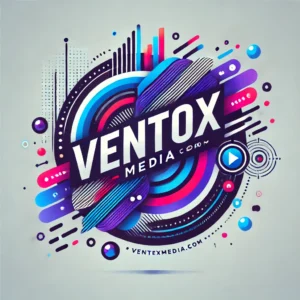översägt: Unlocking the Power of Simplicity and Impact in Communication
Introduction
Language is a fascinating tool that not only connects people but also reflects the culture and emotions of those who use it. Among the many unique terms found in different languages, “översägt” stands out as a word with deep meaning and versatile usage. If you’ve come across this intriguing term and are curious to understand its essence, you’re in for an enlightening journey.
In this blog, we’ll explore what översägt truly means, its origins, how it’s used in modern contexts, and why it’s worth understanding—even if you don’t speak Swedish. Whether you’re a language enthusiast, a marketer, a writer, or simply someone looking to enhance their communication skills, this blog is tailored to you.
What is “Översägt”?
At its simplest, översägt can be translated from Swedish to mean “exaggerated” or “overstated.” However, this straightforward translation fails to capture the depth and nuance that the term holds.
Översägt is more than just embellishment—it reflects a way of expressing something with passion, intensity, or a desire to leave an impression. While it can refer to overstating facts, it also embraces the art of storytelling, emotional emphasis, and even humor. In some contexts, översägt can signify creativity or the use of hyperbole to make a point more compelling.
For example, when someone describes a small inconvenience as “the worst day ever,” they’re engaging in a bit of översägt—not to deceive but to emphasize the emotion behind their statement.
The Origins of “Översägt”

To understand översägt, let’s dive into its linguistic roots. The word comes from two Swedish components:
- “Över”: This prefix means “over” or “beyond.”
- “Sägt”: Derived from “säga,” meaning “to say” or “to speak.”
Combined, these elements create a term that conveys going beyond what is spoken or stated—often to make a point more vivid or engaging.
Historically, the concept of översägt can be traced back to Nordic literature and oral traditions, where it was common to use hyperbole in storytelling. These exaggerations weren’t meant to mislead but rather to entertain, inspire, or emphasize moral lessons. Over time, the term evolved to encompass various forms of communication, from everyday conversations to modern marketing campaigns.
Why Does “Översägt” Matter?
In today’s fast-paced world, where competition for attention is fierce, the ability to stand out is invaluable. Översägt plays a crucial role in this context by allowing individuals and brands to craft messages that resonate, captivate, and leave a lasting impression.
Here’s why översägt matters:
- Enhanced Creativity: It encourages thinking beyond the ordinary and embracing boldness in expression.
- Emotional Impact: By emphasizing feelings or ideas, översägt helps connect with audiences on a deeper level.
- Memorability: Messages that use a touch of översägt are often more memorable and shareable.
How “Översägt” is Used in Modern Contexts
The concept of översägt has evolved beyond its linguistic roots to find applications in various domains. Let’s explore some of these:
1. Storytelling and Literature
In literature, the use of översägt adds depth and color to narratives. Authors often employ hyperbolic descriptions or events to create drama, humor, or suspense. For example, describing a storm as “the heavens weeping with fury” is an example of översägt that enhances the reader’s experience.
2. Marketing and Advertising
In marketing, översägt is a powerful tool. Advertisements frequently use bold claims and emotional appeals to grab attention. A skincare product that promises to “make you look 10 years younger overnight” may be översägt, but it’s effective in piquing curiosity.
3. Personal Branding
In personal branding, individuals often highlight their achievements in ways that could be considered översägt. This isn’t about dishonesty—it’s about presenting oneself in the best possible light. For instance, a job applicant might describe their role as “transforming company operations” rather than simply “improving efficiency.”
4. Everyday Conversations
Even in casual conversations, översägt is common. When someone says, “I’ve told you a million times,” they don’t mean it literally. It’s a way of expressing frustration or emphasizing a point.
The Art of Balancing “Översägt”
While översägt can be highly effective, it’s important to use it judiciously. Overusing or misapplying it can lead to misunderstandings or damage credibility. Here are some tips for striking the right balance:
- Know Your Audience: Tailor your use of översägt based on who you’re communicating with. What works in a humorous context might not be suitable for a formal setting.
- Stay Authentic: Ensure that the core message remains truthful, even if the delivery is embellished.
- Use Sparingly: Save översägt for moments where it adds value, rather than diluting its impact through overuse.
Benefits of Embracing “Översägt”
Why should you consider incorporating översägt into your communication style? Here are some compelling benefits:
1. Boosts Engagement
Messages that employ översägt tend to grab attention and hold interest. Whether you’re writing a blog, delivering a speech, or pitching an idea, a touch of exaggeration can make your content more engaging.
2. Encourages Creativity
Using översägt challenges you to think outside the box and experiment with new ways of expressing ideas.
3. Builds Emotional Connections
By emphasizing emotions or painting vivid mental pictures, översägt helps you connect with your audience on a deeper level.
4. Makes You Memorable
In a sea of information, standing out is crucial. Messages with a bit of översägt are often more memorable than straightforward ones.
Practical Tips for Using “Översägt”

If you’re inspired to experiment with översägt, here are some practical tips to get started:
- Experiment in Writing: Try incorporating översägt into your blog posts, social media captions, or emails. For instance, instead of saying, “This product is effective,” you might write, “This product will revolutionize your life.”
- Enhance Storytelling: When sharing anecdotes or experiences, don’t be afraid to add a bit of dramatic flair. It makes stories more compelling and enjoyable.
- Practice in Presentations: In presentations or speeches, use översägt to emphasize key points and keep your audience engaged. For example, instead of saying, “This strategy will improve efficiency,” say, “This strategy will transform how we work.”
- Be Mindful of Context: Always consider the context and audience. What’s appropriate for a humorous blog post might not work in a professional report.
Common Misconceptions About “Översägt”
Despite its benefits, översägt is sometimes misunderstood. Let’s debunk a few common myths:
- “It’s Dishonest”: While översägt involves exaggeration, it doesn’t mean lying. The key is to ensure the underlying message remains truthful.
- “It’s Only for Professionals”: Anyone can use översägt, whether in personal conversations or professional contexts.
- “It’s Always Over-the-Top”: Effective use of översägt doesn’t have to be extreme. Even subtle exaggeration can make an impact.
Conclusion
Översägt is more than just a word—it’s a concept that encourages creativity, enhances communication, and fosters deeper connections. By understanding and embracing översägt, you can add a new dimension to your personal and professional interactions.
Whether you’re crafting a marketing campaign, telling a story, or simply engaging in a conversation, a touch of översägt can make your message more compelling and memorable. Remember, the key is balance—using översägt to enhance, not overshadow, your core message.
So, why not give it a try? Experiment with översägt in your next project or conversation and see how it transforms your communication. Let us know in the comments how you plan to use översägt, and don’t forget to share this blog with others who might find it helpful!





Post Comment